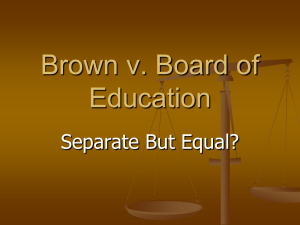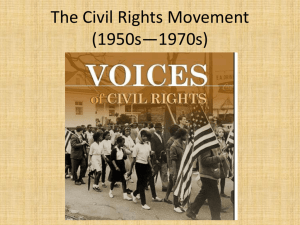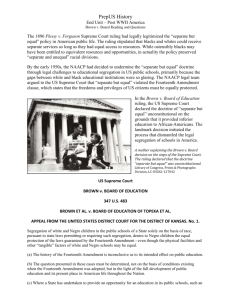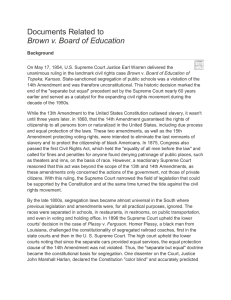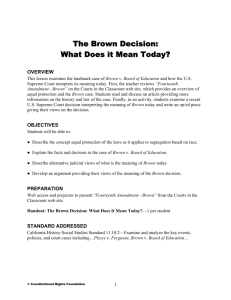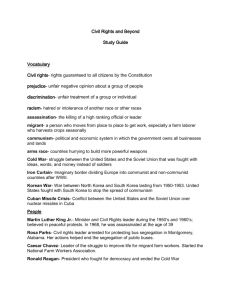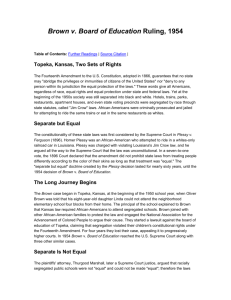Brown v. Board of Education TIMELINE
advertisement
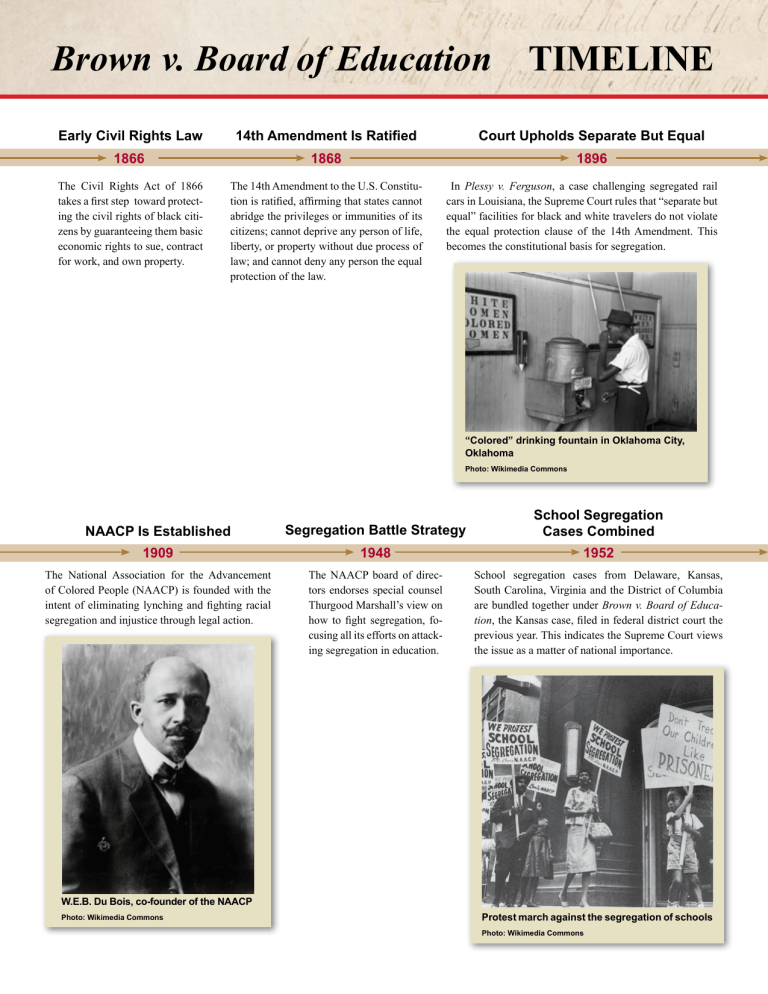
Brown v. Board of Education TIMELINE Early Civil Rights Law 14th Amendment Is Ratified Court Upholds Separate But Equal 1866 1868 1896 The Civil Rights Act of 1866 takes a first step toward protecting the civil rights of black citizens by guaranteeing them basic economic rights to sue, contract for work, and own property. The 14th Amendment to the U.S. Constitution is ratified, affirming that states cannot abridge the privileges or immunities of its citizens; cannot deprive any person of life, liberty, or property without due process of law; and cannot deny any person the equal protection of the law. In Plessy v. Ferguson, a case challenging segregated rail cars in Louisiana, the Supreme Court rules that “separate but equal” facilities for black and white travelers do not violate the equal protection clause of the 14th Amendment. This becomes the constitutional basis for segregation. “Colored” drinking fountain in Oklahoma City, Oklahoma Photo: Wikimedia Commons NAACP Is Established Segregation Battle Strategy School Segregation Cases Combined 1909 1948 1952 The National Association for the Advancement of Colored People (NAACP) is founded with the intent of eliminating lynching and fighting racial segregation and injustice through legal action. The NAACP board of directors endorses special counsel Thurgood Marshall’s view on how to fight segregation, focusing all its efforts on attacking segregation in education. School segregation cases from Delaware, Kansas, South Carolina, Virginia and the District of Columbia are bundled together under Brown v. Board of Education, the Kansas case, filed in federal district court the previous year. This indicates the Supreme Court views the issue as a matter of national importance. W.E.B. Du Bois, co-founder of the NAACP Photo: Wikimedia Commons Protest march against the segregation of schools Photo: Wikimedia Commons Brown v. Board of Education Segregation Ruled Unconstitutional 1954 The Supreme Court’s unanimous ruling in Brown overturns Plessy v. Ferguson, declaring that racial segregation in public schools is a violation of the 14th Amendment’s equal protection clause. Photo: Wikimedia Commons TIMELINE ‘With All Deliberate Speed’ 1955 ‘Brown’ Is Binding on States 1958 State legislatures resist enforcing the Brown decision, declaring it “null, void and no effect” and implementing laws to challenge it. The Supreme Court issues the second ruling in the case, known as Brown II. It orders that desegregation must proceed “with all deliberate speed.” The governor and state lawmakers in Arkansas refuse to obey federal court orders to implement desegregation. In Cooper v. Aaron, the Supreme Court reaffirms its commitment to Brown, saying states are required to comply with its rulings and court orders based on the Supreme Court’s interpretation of the Constitution.

